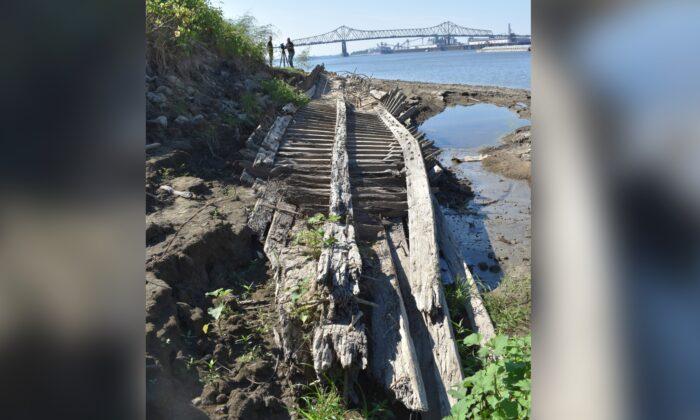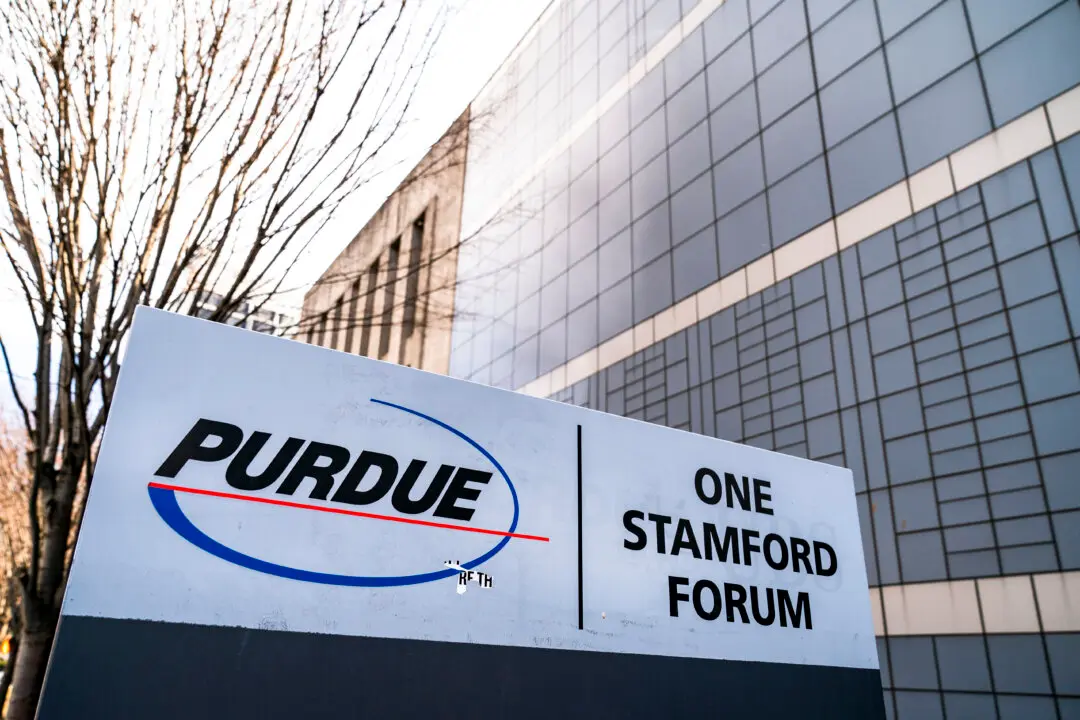BATON ROUGE, Lousiana—An old Cajun memory of the Mississippi River has been uncovered by lowered water levels amid the worst drought the area has seen in a decade.
A sunken ship from the 19th century emerged as the drought persisted, bringing to light what was once known as the S.S. (Steam Ship) Brookhill commercial ferry boat, which carried people and supplies from Port Allen, Louisiana, on the west bank of the river, to Baton Rouge, Louisiana, on the east bank, before the days of Mississippi River bridges were beginning to connect roads for trains and motorized vehicles across the river in the 1940s.
Louisiana State Archeologist Chip McGimsey told The Epoch Times that the last time the ship was seen above water was in 1992 when the river was going through another low stage, though at the time the ship itself was almost completely buried in the mud.
“You could just barely see the outline of the top of it,” McGimsey said.
Because of its submerged state, little work was done to identify it, he said.
Now, 30 years later, most of the mud has been washed away, leaving around 80 percent visible to anyone who would be walking the riverbank, which is how the 95-foot-long and 10-foot-wide ship was spotted and reported earlier this month to the history department at Louisiana State University, McGimsey said.
The Brookhill had a sister ship called the Istroma, which records show was built at the Howard Shipyard in Indiana in 1896, he said, leading researchers to believe—though there are no records to back it up—that the Brookhill was built in the same time and place.
“Both vessels sank in a big storm on Sept. 15, 1915,” McGimsey said. “The newspaper accounts say the Istroma broke free from the wharf and drifted down the river some distance before she sank. Unfortunately, none of the accounts tell us where she sank, but the Brookhill stayed tied to the wharf where a raft of logs smashed into the river side of her and she sank right there at the dock.”
As far as restoration goes, McGimsey said it would cost millions of dollars just to remove the Brookhill and would require taking her apart board by board, then numbering those pieces before taking them to a lab to be preserved, which could take years.
“Then you’d have to find a museum or someplace that had the storage space where she could be put back together,” he said. “That’s a huge expense, and to be perfectly honest, this boat isn’t worth the effort. She’s not particularly historically significant. She was just your basic workboat.”
Still, documenting the boat’s history has been a priority for McGimsey, he said.

‘Significant Navigation Hazards’
The U.S. Coast Guard Guard told The Epoch Times that water levels in some areas of the Mississippi River have sunk below historic levels set in 1988.“These conditions have created significant navigation hazards to the Marine Transportation System,” a spokesperson said. “The Coast Guard, in consultation with our maritime industry partners, has implemented periodic waterway restrictions such as tow size and draft restrictions, as well as one-way traffic schemes.”
With minimal rain forecast, the Coast Guard said it will continue to monitor water levels and may be required to close the river to commercial traffic to allow the U.S. Army Corps of Engineers (USACE) to conduct dredging operations.
‘Not Unprecedented’
When those levels return to normal is the question on the minds of those who rely on the river as a highway for commercial transport.The USACE has been dredging—or deepening the channels of the river—to allow barges to continue to be fully loaded.
Dennis Norris worked in river management with the USACE in Vicksburg for 38 years before retiring in 2018 and starting the engineering consulting firm RiverWise Consulting.
Throughout the decades, he’s witnessed the river rise and fall.
“The last drought that I personally worked was in 2012, and prior to that was in 1988 when there were record lows,” he told The Epoch Times.
Before his time, there was a 1956 drought that also brought the water down to extremely low levels, he said.
“This drought is not unprecedented, but it certainly does impact the country, because it’s a superhighway for moving agricultural and many other products that support not only the U.S., but also the global economy,” Norris said.





